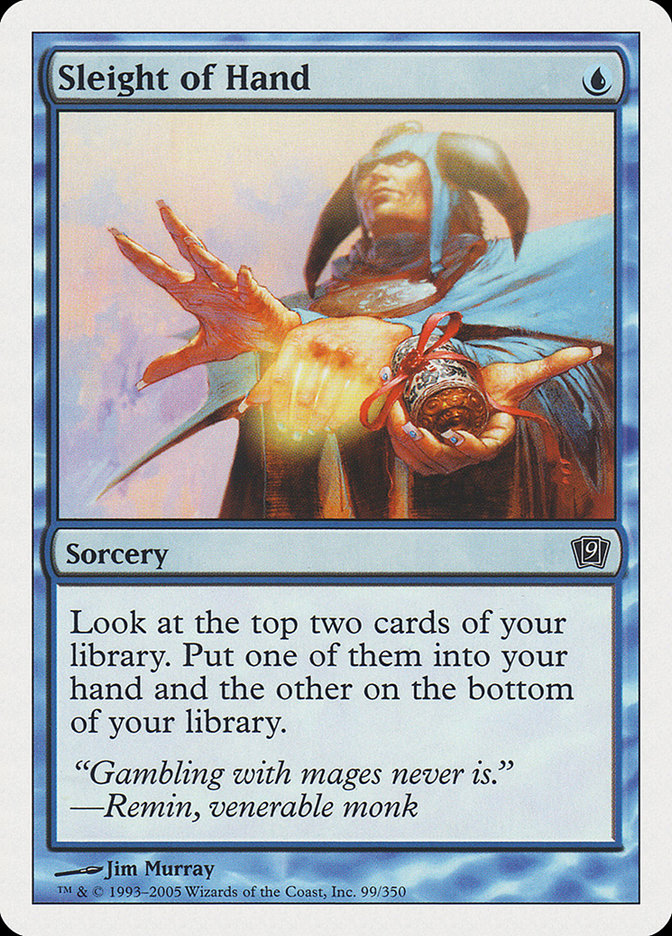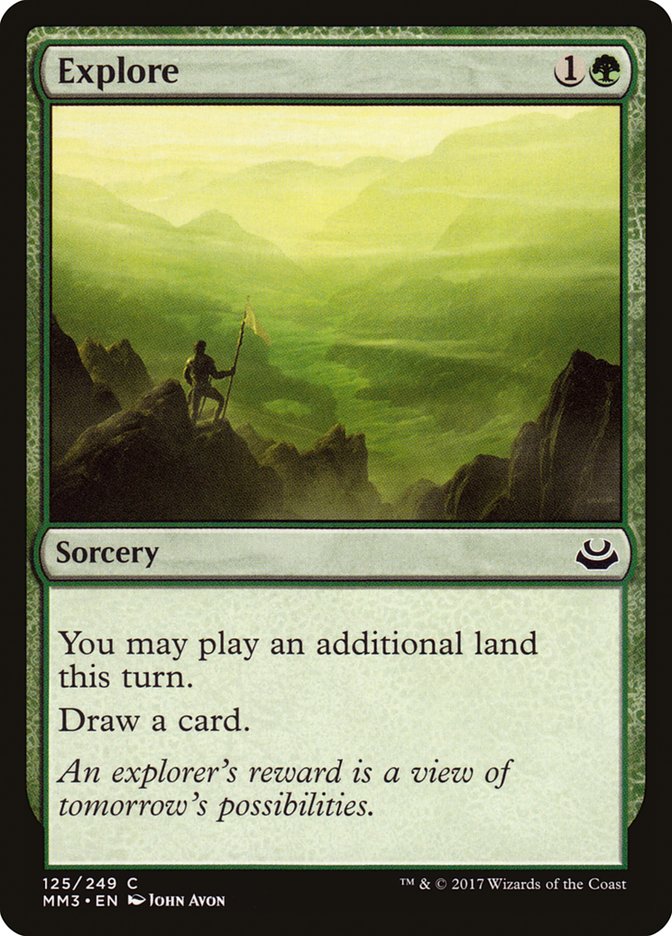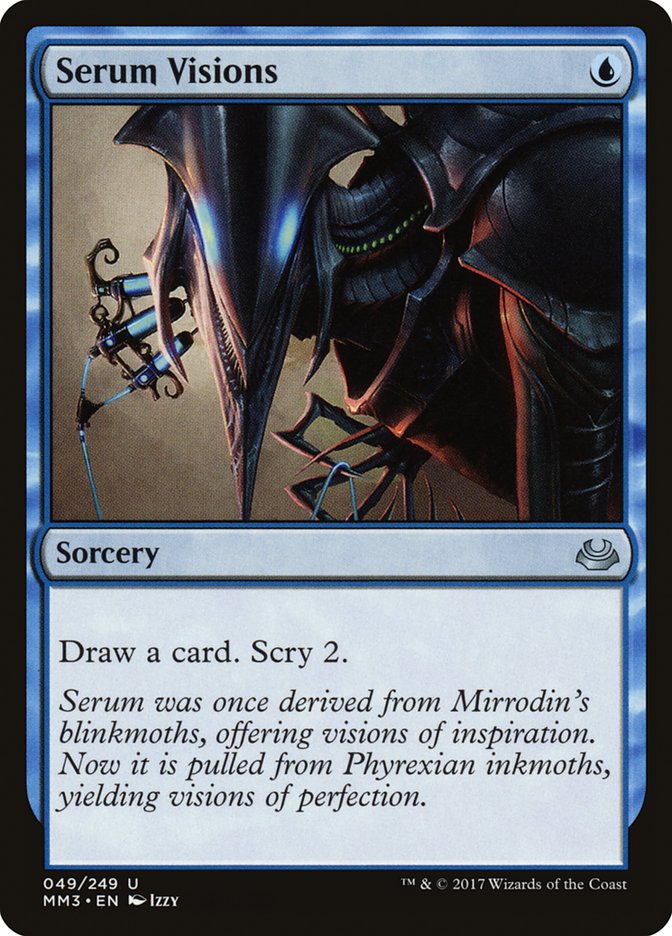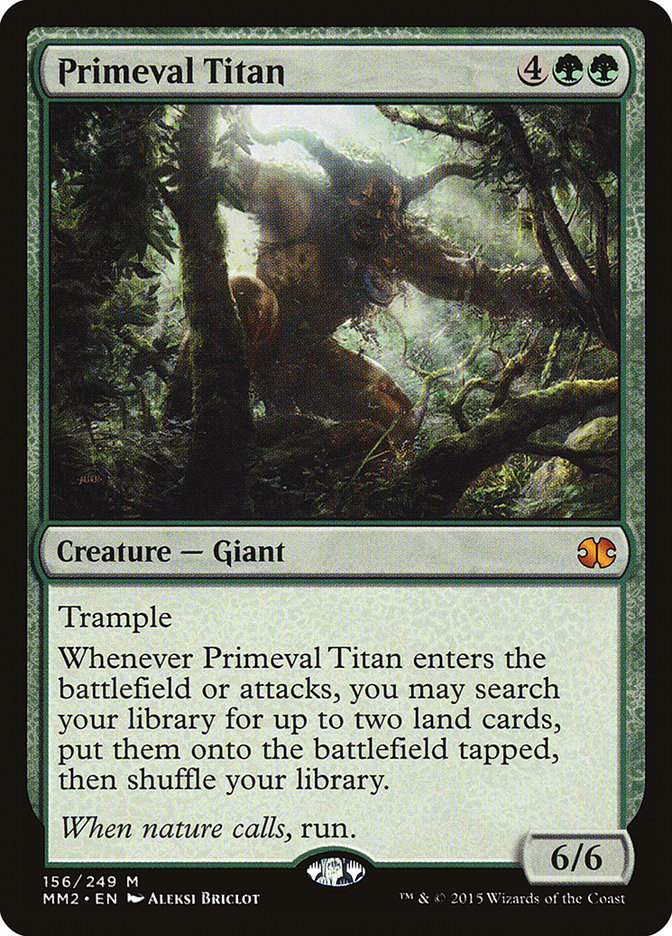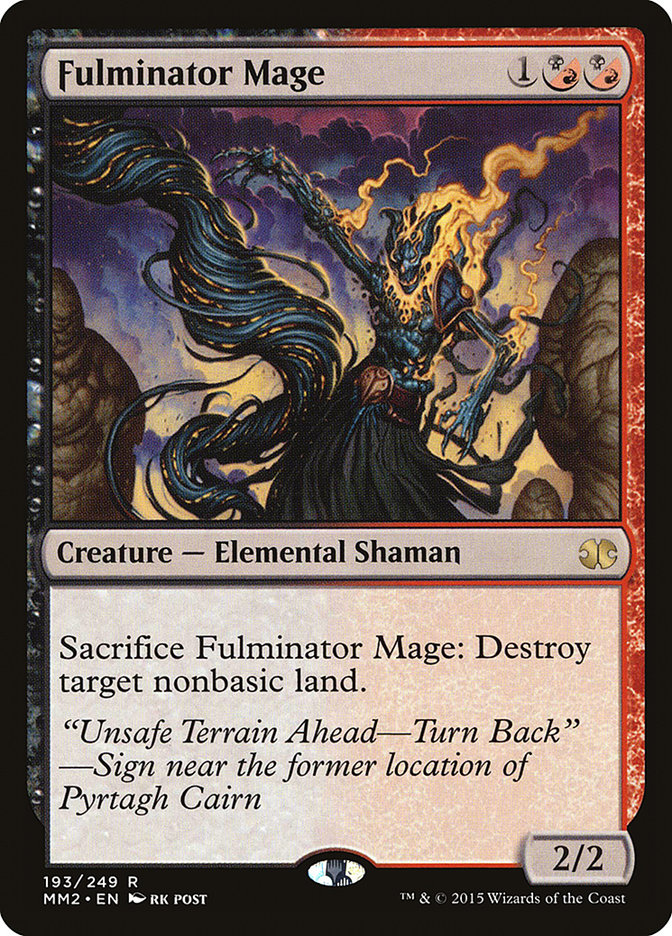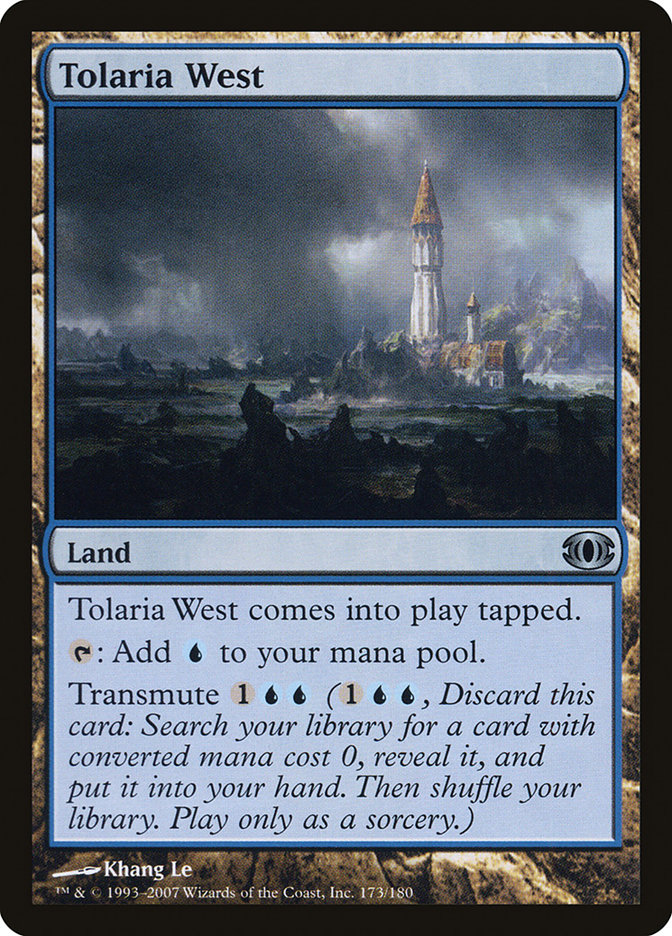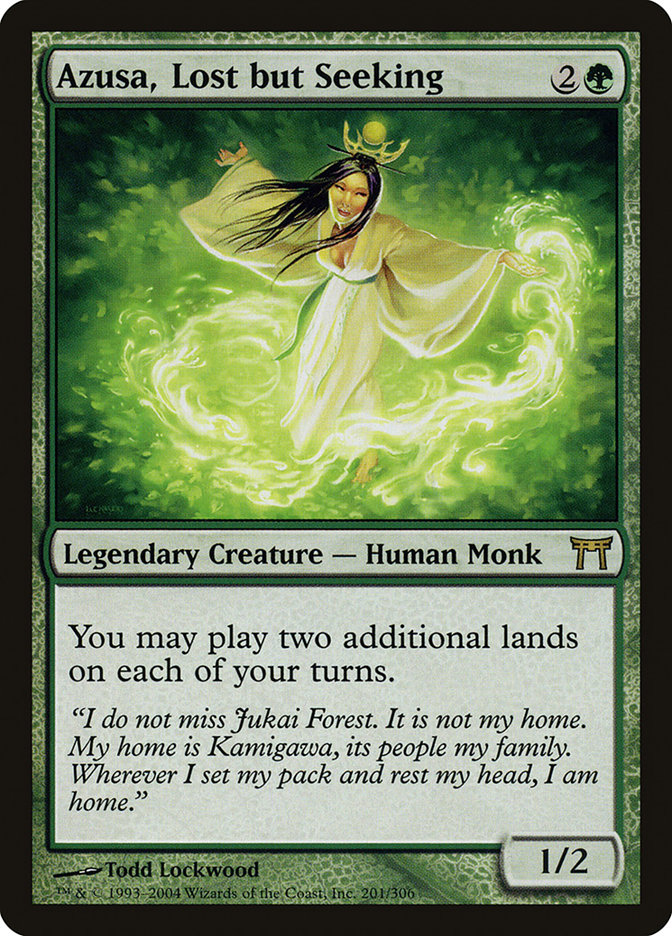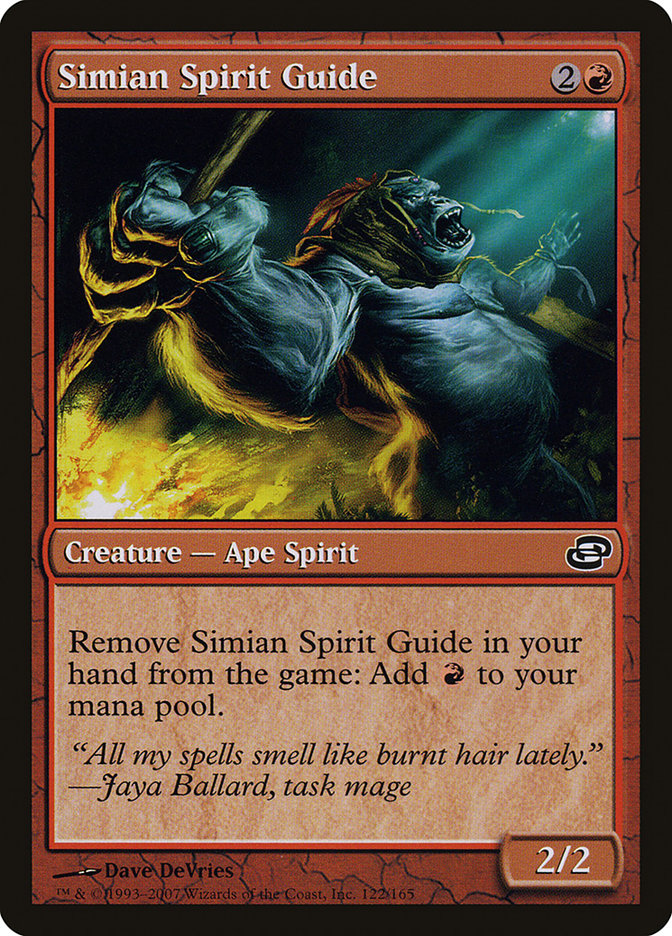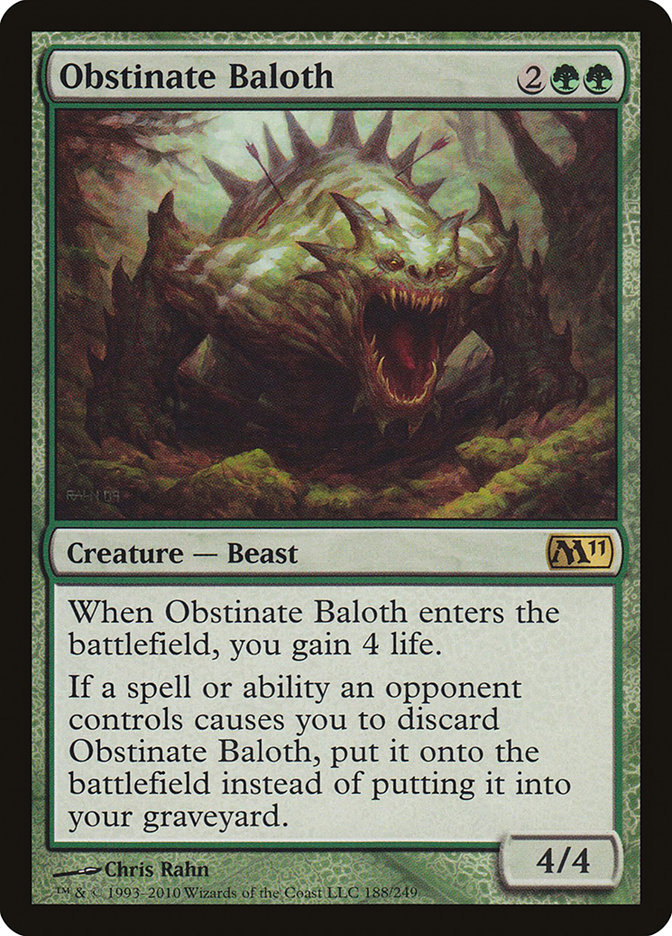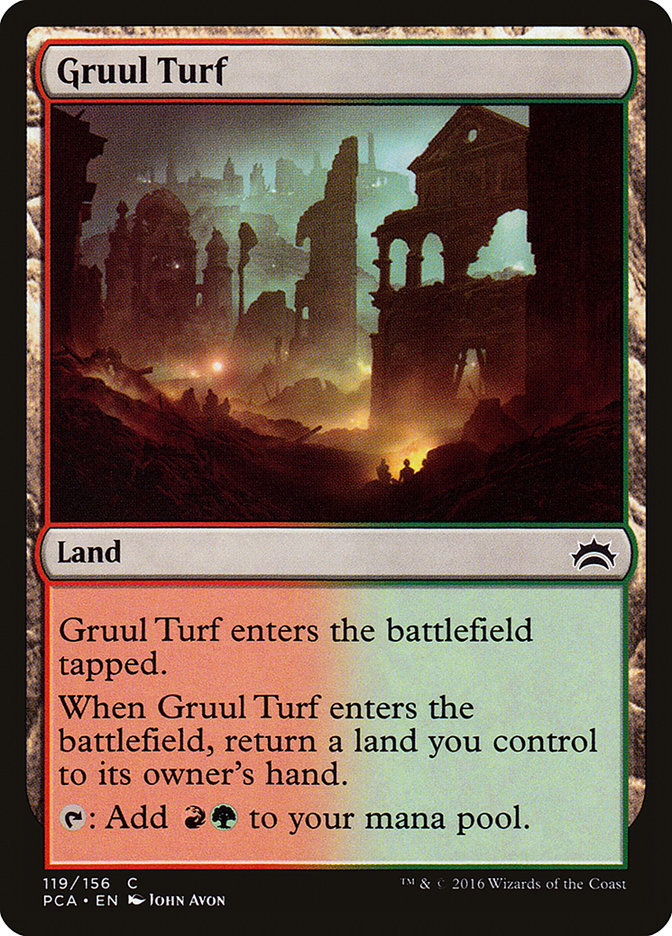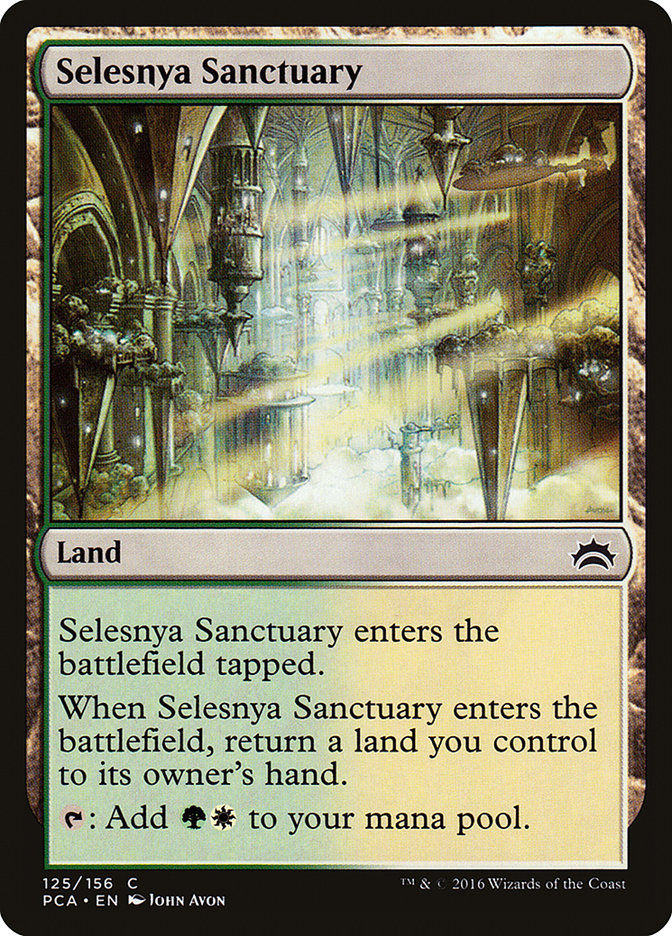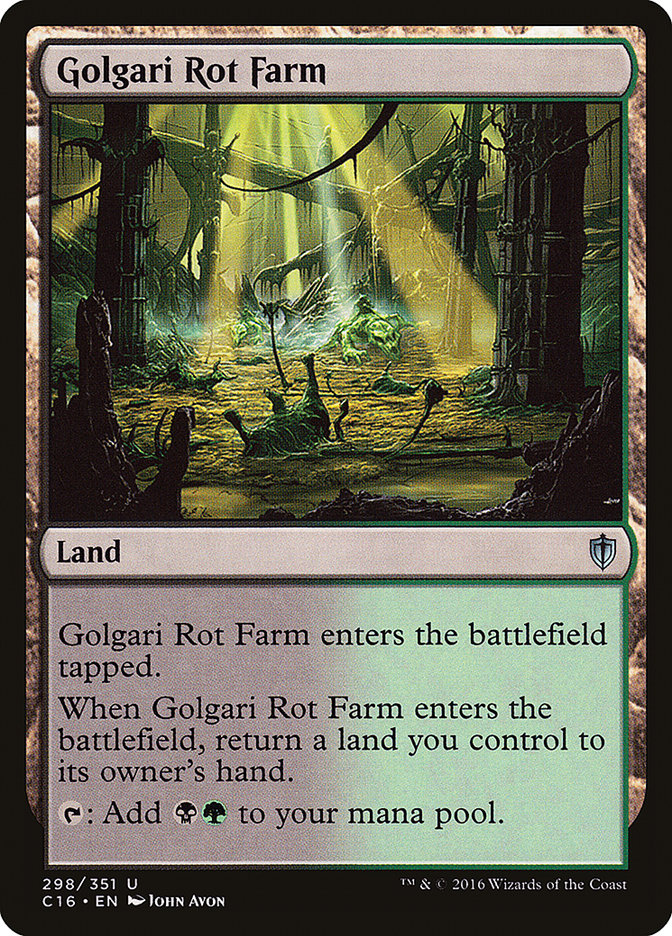As I mentioned last week, the Unified format for Grand Prix San Antonio forced me to try a variety of decks, since I knew Justin was going to play Jund Death’s Shadow and Corey was going to play U/W or Jeskai Control. That left everything else for me. I settled on Amulet Titan fairly quickly after picking it up, and this is the list I ended up playing:
Creatures (14)
- 2 Azusa, Lost but Seeking
- 4 Sakura-Tribe Scout
- 1 Simian Spirit Guide
- 4 Primeval Titan
- 2 Tireless Tracker
- 1 Walking Ballista
Lands (28)
Spells (18)

I was impressed with Amulet when I played it, but it overlapped with Corey’s deck in that we’d both want Serum Visions. At first I asked if he could play Sleight of Hand instead of Serum Visions, because even though either of us could play Sleight of Hand instead, it would be a bigger downgrade for the combo deck, since it’s important that I dig for very specific cards, while he’s mostly just using it to smooth out lands and spells and to have a cheap cantrip for Snapcaster Mage.
After playing with and loving Tireless Tracker, I decided to experiment with Explore over Serum Visions. My first game with Explore, I drew it with two Amulets and it did an adequate Summer Bloom impression and I was pretty sold.
For reference, this card is Modern-legal. Always a plus.
Compared to the old Amulet Bloom deck, Amulet Titan has fewer finishers because of the removal of Hive Mind, which it replaces with more card selection than I used to play, but Tireless Tracker was giving the deck an entirely different angle that Explore plays very well with, and gaining that dimension made it less dependent on the combo.
I don’t think I played enough to confirm that Explore is better in the deck than Serum Visions, but once I got to the point where it was a difficult question, I figured we’d be best off as a team if I could give Corey Serum Visions again.
Throughout testing I was slowly increasing the number of Tireless Trackers I had access to, and the night before the tournament, I finally went up to four in my 75 because there weren’t enough other cards I’d really liked, and after playing with them, I consider them a core part of the strategy.
I knew that it was a very powerful card against slower decks, and my thinking was that it was the best thing I could have against midrange and control decks, and that’s how it played out, but I hadn’t realized just how good it is. The missing piece was thinking about my opponent’s positioning.
Most decks shift to combat Primeval Titan or, better yet, your lands.
Fulminator Mage is the most common sideboard card that’s particularly functional against Amulet. Tireless Tracker lets me minimize my commitment to getting to six mana by trimming some Summoner’s Pacts while maintaining my threat density, and it punishes people who cut removal to make room for land destruction by trumping their one-for-one game. A slow land destruction spell is never beating an unanswered Tireless Tracker. It’s just a seamless positioning shift that still plays well with everything else is doing, yet bypasses and trumps almost all the hate people have other than Blood Moon (which it still has more game against than any other threat I might play).
While Tireless Tracker was certainly the most significant innovation of my build of the deck, there are a few other things I did differently aside from playing Explore.
First, the inclusion of Walking Ballista.
I think Walking Ballista is an extremely powerful card in decks that can have a lot of mana, and it’s very different from other things you can do with Tolaria West, which is a big selling point. In my first League with Walking Ballista, it allowed me to win a game by killing Platinum Angel, which previous versions of Amulet Titan couldn’t answer. It’s also great against Affinity and other decks with large numbers of one-toughness creatures.
It can kill a Death’s Shadow player who pushes their life too far, it can answer problem creatures like Eldrazi Displacer or win through Ensnaring Bridge, and it also gives the deck a way to transmute Tolaria West for a threat under Chalice of the Void for zero. I suppose it also sometimes allows you to find a threat with Ancient Stirrings. Overall, I think it’s worth playing, but I don’t think it changes the deck that much.
Next, only two Azusa, Lost but Seeking.
Bobby Fortanely played four in Grand Prix Vancouver, which I believe is the industry standard. The problem is that there are almost no situations where you want to draw a second one, and you draw two fairly often with four in the deck. Also, in my build specifically, Explore removes a fair bit of the burden from Azusa, and Tireless Tracker competes with it on the curve as well as strategically, just because the deck has less emphasis on getting to six mana as the only gameplan.
One Simian Spirit Guide: shortly before the tournament, Kevin Grove, a regular Amulet player, messaged me to discuss the deck, and he convinced me to add an untapped green source and Simian Spirit Guide. Justin and I used to play one most of the time in Amulet Bloom, and I think it makes sense; you basically just need to hit six mana once, and you generally want to do it on turn 4. Simian Spirit Guide with either Explore or a bounceland and Amulet of Vigor allows you to do that, and Simian Spirit Guide with an unanswered Sakura-Tribe Scout allows you to cast a Titan on turn 3. Drawing multiple Simian Spirit Guides is a pretty big liability against discard, especially with Tireless Tracker, but it felt like the first one would mostly just help me cast more fast Primeval Titans.
Maindeck Bojuka Bog?
This was an absolute all-star in the tournament because I played against Dredge three times, and Bojuka Bog makes it amazingly hard for them to win. First of all, if you have Sakura-Tribe Scout and Bojuka Bog, the game is basically over. You can tap Sakura-Tribe Scout to Bojuka Bog them in their draw step or whenever else you need to, and whenever you draw a bounceland, you get to do it again. Second, it just means that your Primeval Titan exiles their graveyard, clearing out any Conflagrates that had been waiting to finish you off, which makes it much easier to win the race.
While I knew Dredge would see some play, Death’s Shadow was the stronger reason for its inclusion, as the cost is so low and shrinking Tarmogoyf and turning off Traverse the Ulvenwald are both very good things to do against them, and there are also a lot of other decks in the format that incidentally use their graveyard a little.
No Obstinate Baloth: most people play one of these, and I don’t really get it. Burn used to be a good matchup, and now it’s among the worst, as you were always racing them and Summer Bloom and Hive Mind made it much easier to win the race. Now you’re a midrange/value/ramp deck instead of a fast combo deck and you can barely interact with their gameplan. Clearly, Obstinate Baloth helps there, but it doesn’t go very far, and there are very few other places where I want it.
In theory, you can get Obstinate Baloth with Summoner’s Pact in response to a Liliana of the Veil activation or Kolaghan’s Command, which seems pretty sweet, but I’m just not convinced that a 4/4 is all that likely to matter against Death’s Shadow, which is the deck that’s most likely to cast those cards against you. I left it in my sideboard, but I think it’s the only card I never used.
Bonfire #GPSanAnt pic.twitter.com/MPBkHA8VjG
— Mishra’s Photoshop (@MishrasFotoshop) April 1, 2017
Bonfire of the Damned wasn’t my addition, but after this weekend, I think some people might ask about it. The format used to be a lot faster, and the “late-game” didn’t really exist, so there wasn’t much of an advantage to having a spell that scales up this much, and it was much more important to just have a fast, reliable answer like Pyroclasm. These days, most of the small creatures have one toughness rather than two or three, so a small Bonfire usually gets it done, and you’re a lot more likely to get to the very late-game, where Bonfire is a huge threat instead of a moderate removal spell.
Usually, when someone plays a major tournament with a deck, it’s fair to assume they think the deck is the best deck to play. They might change their mind over the course of the event, but at least you know where they stood. While I played Amulet in San Antonio, that might not say a lot about how good I think it is; I could still think it’s worse than every deck with Thoughtseize, Tarmogoyf, Verdant Catacombs, Snapcaster Mage, Path to Exile, and so on, as all of those cards were used by other decks on our team, so I could easily think it’s actually the fifth-best deck to take to an individual tournament. As it happens, that might be about right. Death’s Shadow is a really absurdly good card, as is Thoughtseize, and it’s pretty hard to justify not playing with them.
More importantly, going into the tournament, I thought I had a solid matchup against Death’s Shadow because I’d been beating it online, but I lost every match I played against it in the GP (three or four). Whether that matchup is actually good or whether it can be saved it a big factor in how good a choice this deck is for an individual tournament.
One possibility is to replace Gruul Turf with Selesnya Sanctuary or Golgari Rot Farm and add white or black cards like Path to Exile or Fatal Push to the sideboard over Bonfire of the Damned (and other unnecessary cards like Obstinate Baloth), which would help with the transformative midrange Tireless Tracker deck. Engineered Explosives does a lot of heavy lifting in the matchup, but it can’t do it all. Cavern of Souls could maybe be cut for an additional colored source, since there really aren’t very many counterspells in the format. I’d suggest that it might need a place in the sideboard at that point, but given how strong Tireless Tracker is against control, there’s a chance you can get away without it (but it is a very high-impact card in the matchups where it’s good).
As to whether I’d recommend the deck, I think it’s really fun, so I’d recommend it either if it’s your kind of deck and you want to have a good time or if you simply have an aversion to casting Thoughtseize.
If you have clear idea of your metagame, I’d want to play it against Eldrazi (Tron or Bant), Affinity, Dredge, and blue-based control decks. I’d definitely want to avoid it against Burn, Ad Nauseam, and Blood Moon decks. I’m unsure if I’d want to play it against Thoughtseize decks, big mana decks, and Collected Company decks.


